Physical Address
304 North Cardinal St.
Dorchester Center, MA 02124
This chapter builds on a new perspective of operative intervention in cases of marked displacement of scapular fractures, based on surgical indications covered in the last chapter ( Table 16.1 ). These surgical indications should be assessed with measurements obtained on three-dimensional computed tomography (3D CT) scans for accurate reading, and of course applied to the patient’s context including age and comorbidities, baseline and desired function, as well as concomitant injuries. As discussed, these surgical indications have been tested with application to many patient populations, which have yielded good or excellent results in early, midterm, and long-term well-documented outcome studies. These results are summarized in the last chapter, which should yield a reasonable approach to choosing surgical candidates.
| Lateral border offset | 20 mm (sometimes called medialization measured on AP scapula) |
| Glenopolar angle | <22 degrees (sometimes called GPA) |
| Angulation | >45 degrees (measured on scapula Y view) |
| Articular Step-off | >4 mm (>20% required for instability) |
| Double lesions of superior shoulder suspensory complex | (each lesion should be displaced >1 cm) |
| Triple and quadruple lesions of the SSSC | (acromioclavicular dislocation, clavicle, coracoid + neck) |
| Coracoid fracture | >10 mm |
| Acromion fracture | >5 mm |
| Reverse total shoulder arthroplasty painful stress fracture | >1 mm (after conservative management failure) |
| Nonunion-malunion scapula | Pain-dysfunction (commonly in fractures which would have been indicated) |
| Translation and anteversion | Undefined |
a (See Chapter 15 for how to measure.)
The purpose of this chapter is to help the surgeon choose from a variety of surgical options and to execute the chosen operative approach while optimizing access and minimizing risk to the patient. Additionally, fracture reduction methods will be elucidated and placed into the context of common deforming forces on the typical fracture fragments. Common associated injuries, as well as potential complications of surgery to recognize and consider for intervention, will be discussed. Lastly, a protocol for rehabilitation after scapula open reduction internal fixation (ORIF) with a track record for success will be presented and will be applicable to the majority of patients.
It is important to select the best approach to most effectively accomplish open reduction and internal fixation with the least amount of trauma to the soft tissues. These principles will promote the quickest and most complete recovery ( Table 16.2 ).
| Anterior (Beach Chair Position) |
|
|
| Posterior (Lateral Decubitus Forward Leaning) |
|
|
| Other Considerations |
|
|
|
Generally, all scapular neck and body fractures, fractures of the acromion, inferior angle or posterior scapular spine, as well as the posterior glenoid, should be approached from posterior. Only anterior glenoid and coracoid fractures should be approached from anterior. It is rare that combined approaches are necessary and only applies to approximately 5% of cases overall. Additionally, other lesions that commonly occur must be considered for incorporation into the operative plan, inclusive of clavicle fractures and acromioclavicular (AC) dislocation. Clavicle fractures occur in approximately 30% of operatively indicated scapular fractures. More uncommon are sternoclavicular lesions and proximal humerus fractures; however, the ipsilateral injury rate is approximately 50%.
If the anterior glenoid fracture is small enough to treat arthroscopically, such as for the bony Bankart lesion more common to sports-related shoulder dislocation mechanisms, then management with suture anchors would be most appropriate. This scenario could apply to fractures that make up <10% of the articular surface ( Fig. 16.1A–B ). While it has been described for larger fragments, the surgeon should determine the best strategy in his or her hands to obtain an anatomic and stable reduction.
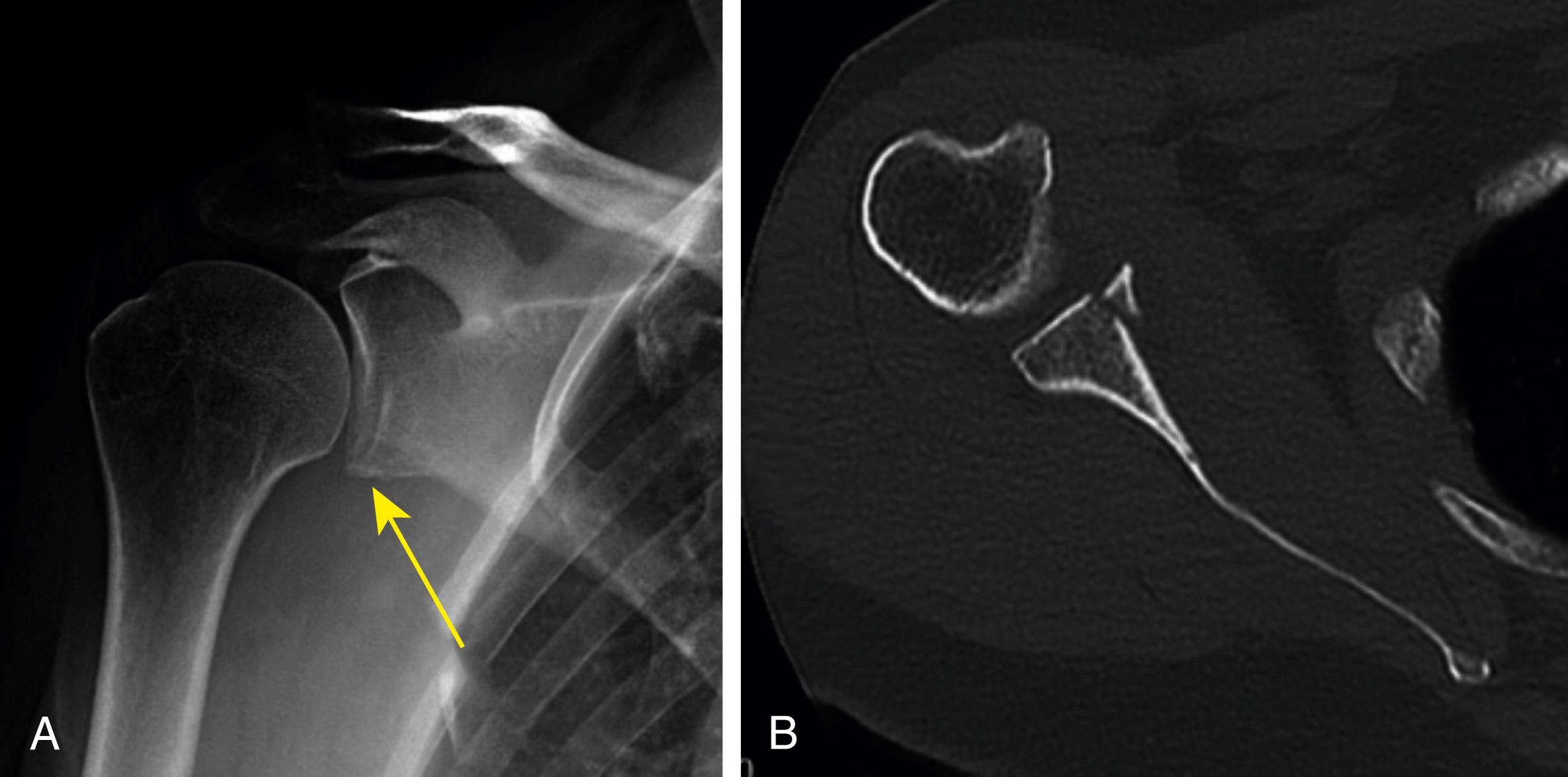
Sometimes glenoid fractures are more inferiorly located, and the surgeon must determine whether an anterior or posterior approach offers the best access. A 3D CT reconstruction can help to visualize where the apex of the fracture is in order to make this decision ( Fig. 16.2 ). The inferior glenoid fracture is challenging to buttress from anterior due to inferior access through a deltopectoral interval, whereas it is entirely feasible through the interval of the teres minor and infraspinatus posteriorly.
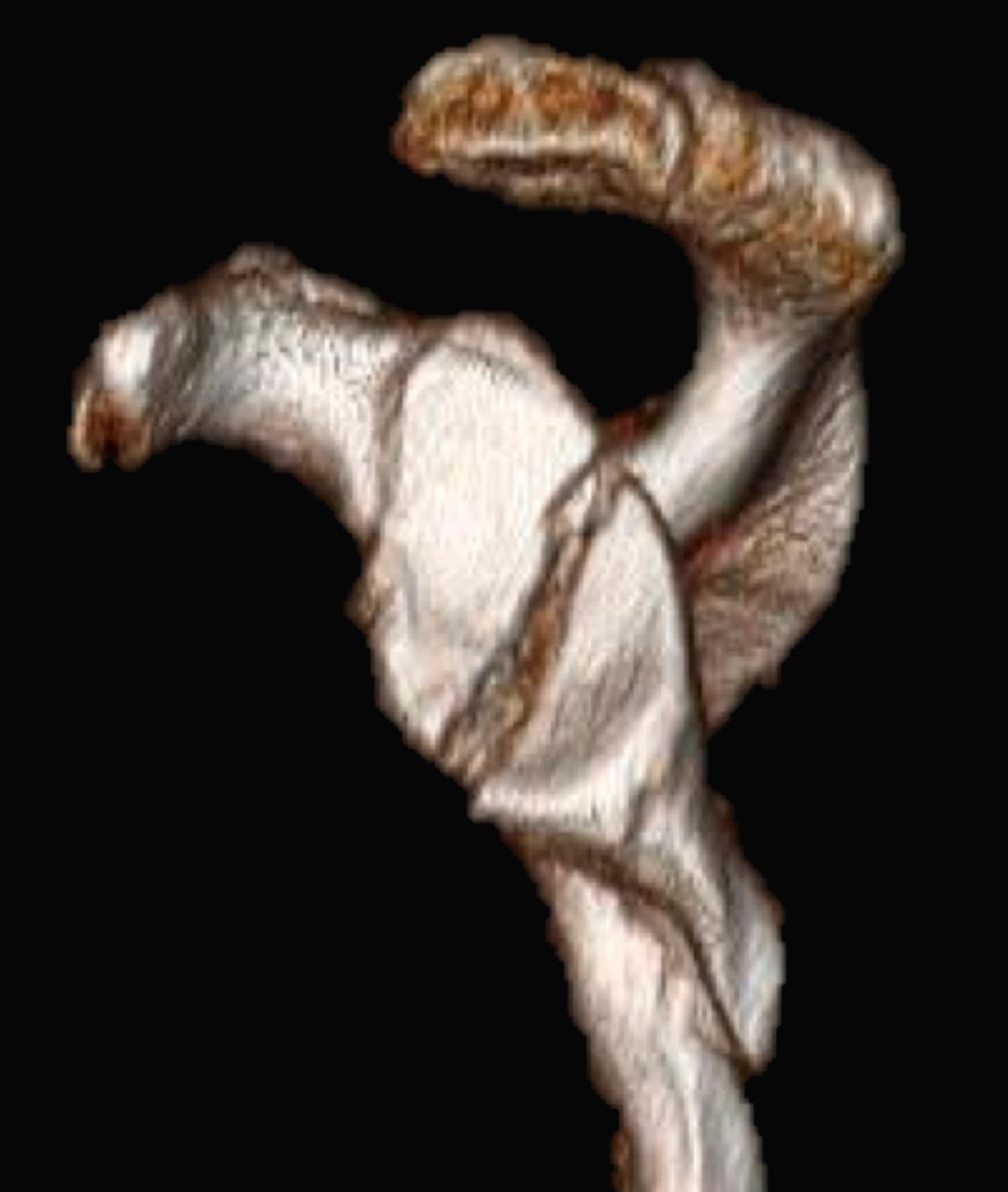
An isolated coracoid fracture can be accessed through a 4- to 6-cm incision centered over the coracoid itself. There is a common superior glenoid fracture variant (Ideberg Type III Scapula or Eyers Type V Coracoid) ( Fig. 16.3 ). This fracture often extends just inferior to the coracoid and is best accessed through a deltopectoral approach if the surgeon desires to visualize the articular surface or clean out the fracture which can only be performed through this glenoid vantage point. The need for an arthrotomy in this fracture variant is particularly relevant to delayed fractures in which the medially displaced superior glenoid with a typical caudal tilt is filled with callus after 10–14 days.
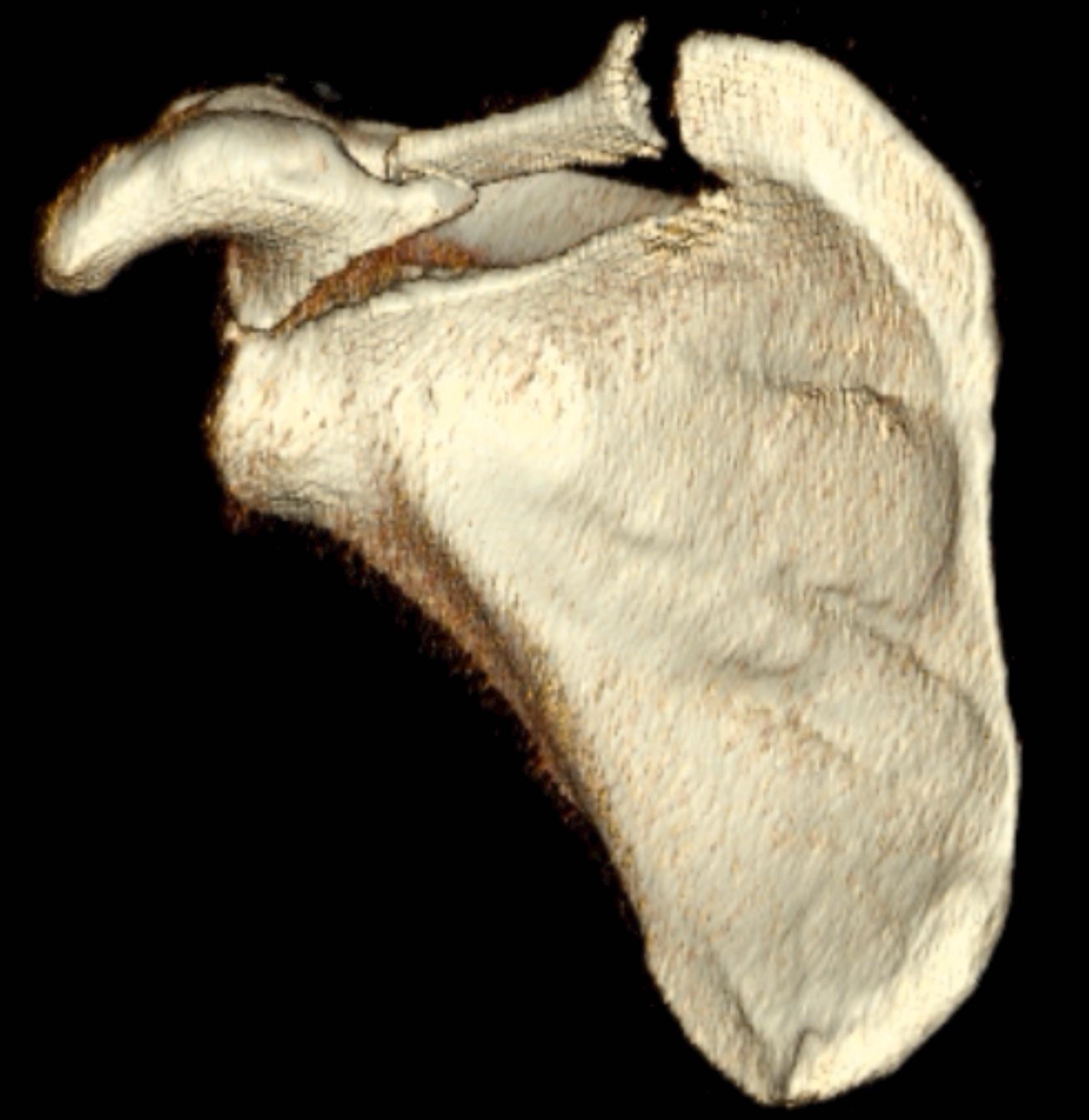
For the commonly associated AC dislocation or clavicle fracture, the incision is modified and extended as necessary to accommodate fixation of this pathology when present. The surgical tactic should involve reducing a distal clavicle fracture or AC dislocation prior to coracoid fixation because of the deforming forces which are more challenging to manage for the coracoid reduction and fixation.
The variations of the posterior approach for scapular neck and body fractures depend on the fracture pattern, chronicity of the fracture, and experience of the surgeon. In general, it is a good idea in a surgeon’s experience to begin with more open and invasive approaches until better knowledge of critical neurovascular anatomy, common deformities, and muscular planes is gained. It is far easier to obtain and maintain a reduction, and apply implants with an open and visual assessment of the posterior scapula, than it is to do the same through small surgical windows of exposure. As long as soft tissue handling is respectful, and proper anatomical and internervous intervals are used with good reattachment, open approaches have a favorable track record. With more experience will come less detachment of muscular origins and more tactical incisions and dissection.
At this juncture, the operative approach depends upon whether the surgeon desires limited or complete exposure to the posterior scapula. Intermuscular “windows” can be used to access specific portions of the fracture involving the scapular borders. An extensile approach can be executed to expose the entire posterior scapula. The extensile approach still respects the entire subscapularis muscular attachment on the anterior surface, and the elevated flap respects the neurovascular pedicle of the suprascapular nerve and artery ( Table 16.3 ).
| Extensile Judet ( Fig. 16.4 ) |
|
|
|
|
| Modified Judet Deltoid Detaching ( Fig. 16.5 ) |
|
|
| Modified Judet Deltoid Sparing ( Fig. 16.6 ) |
|
|
| Mini-Modified Judet ( Fig. 16.7A–B ) |
|
| Minimally Invasive Osteosynthesis ( Fig. 16.8A–B ) |
|
|
|
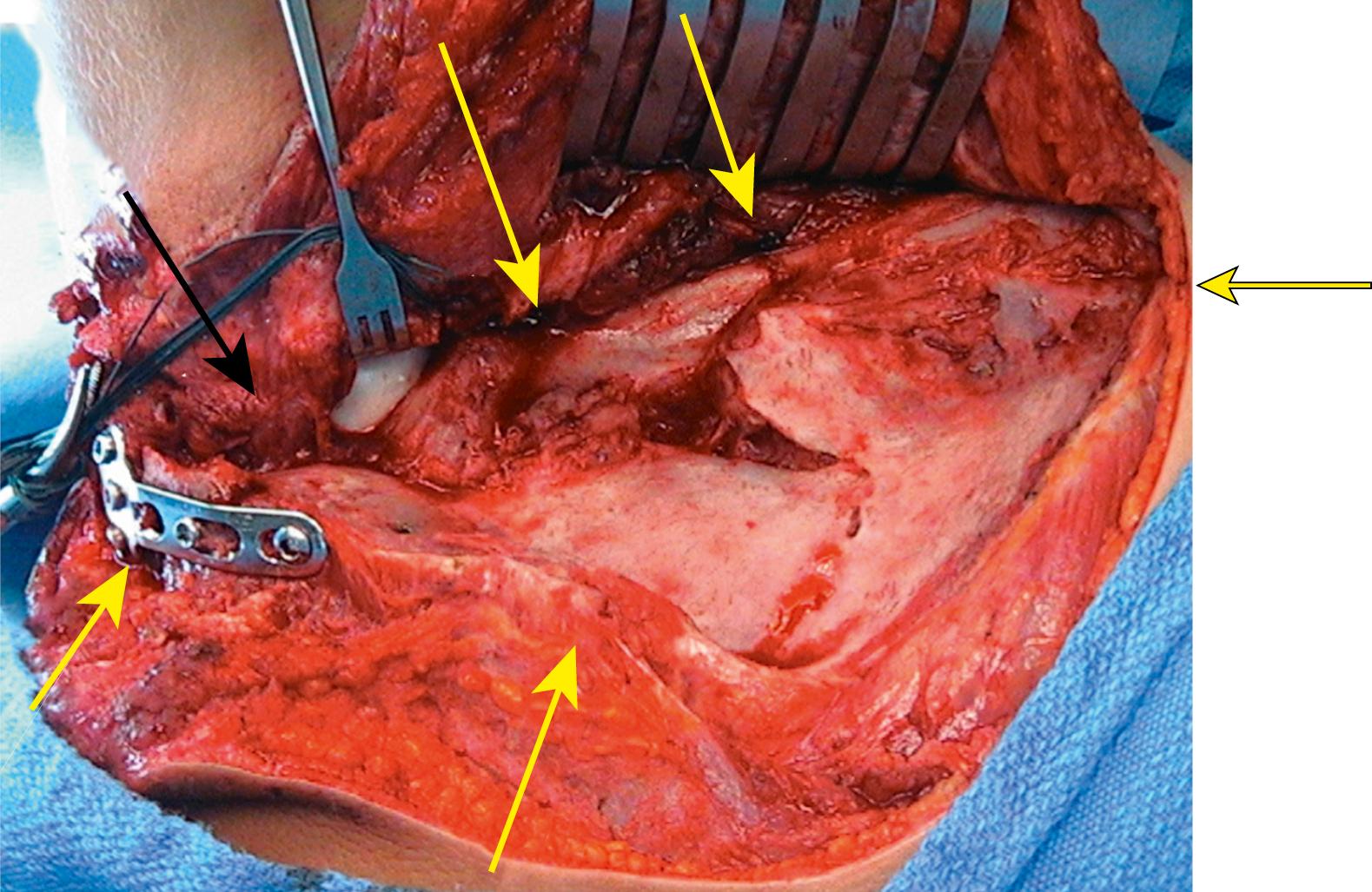
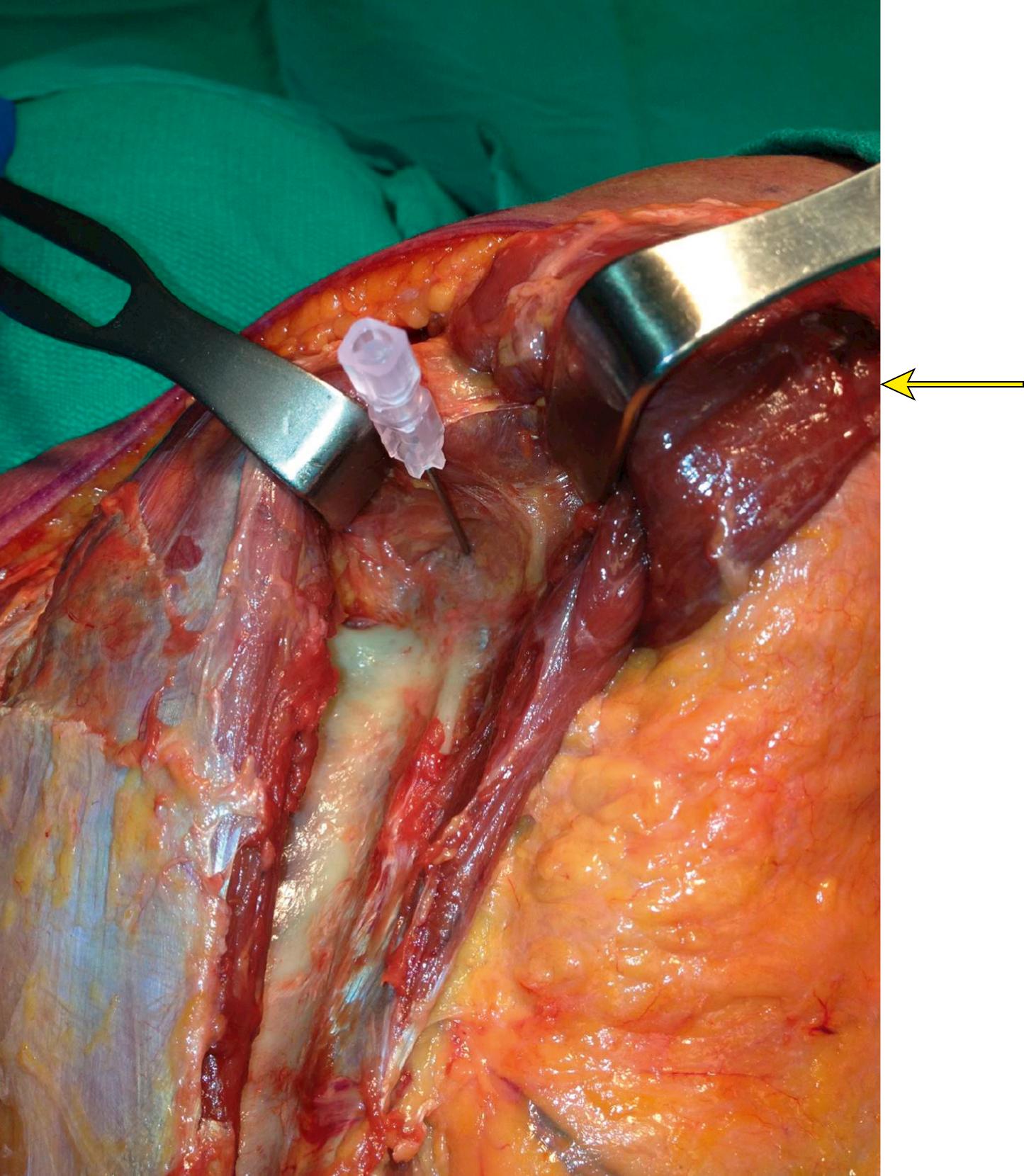
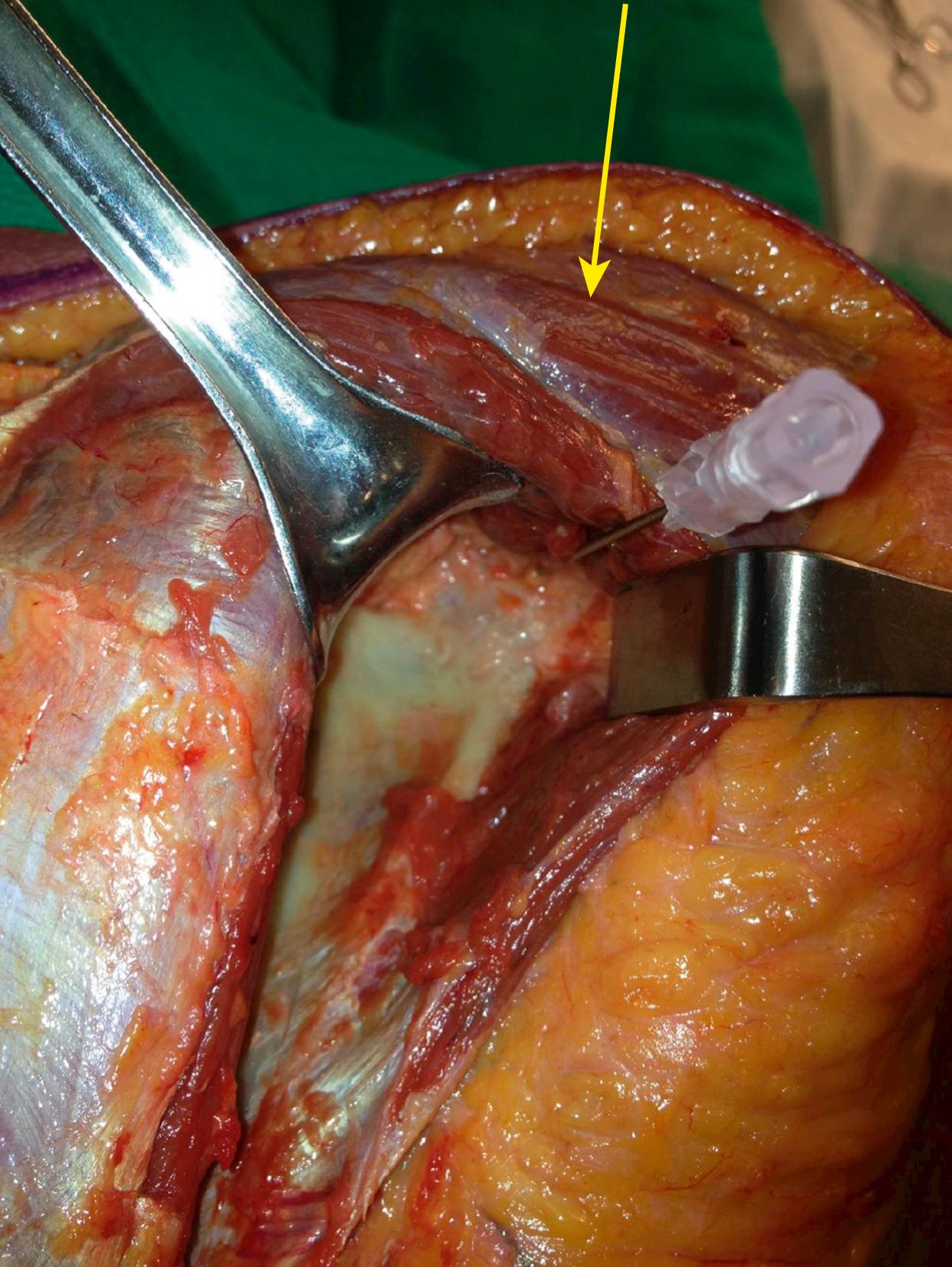
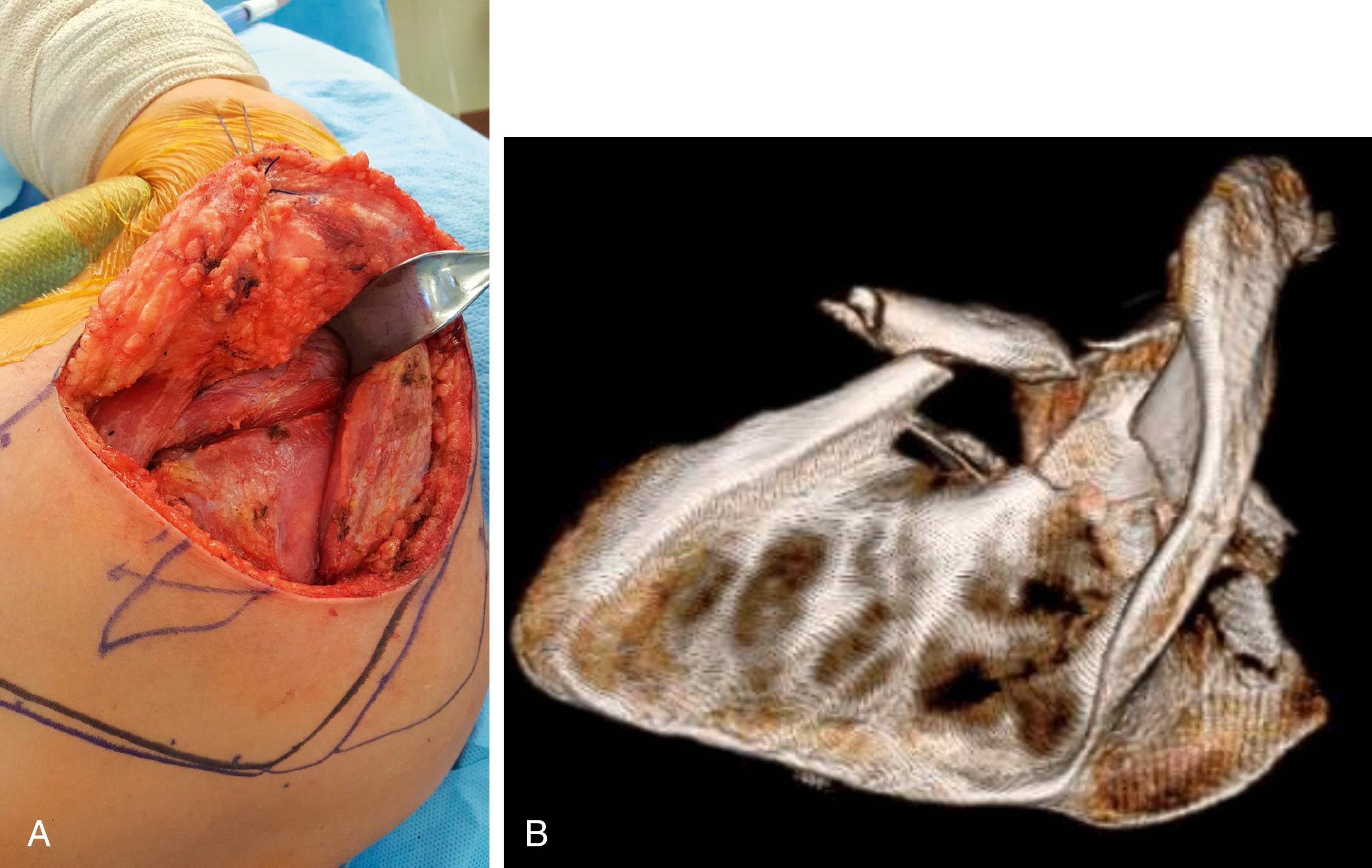
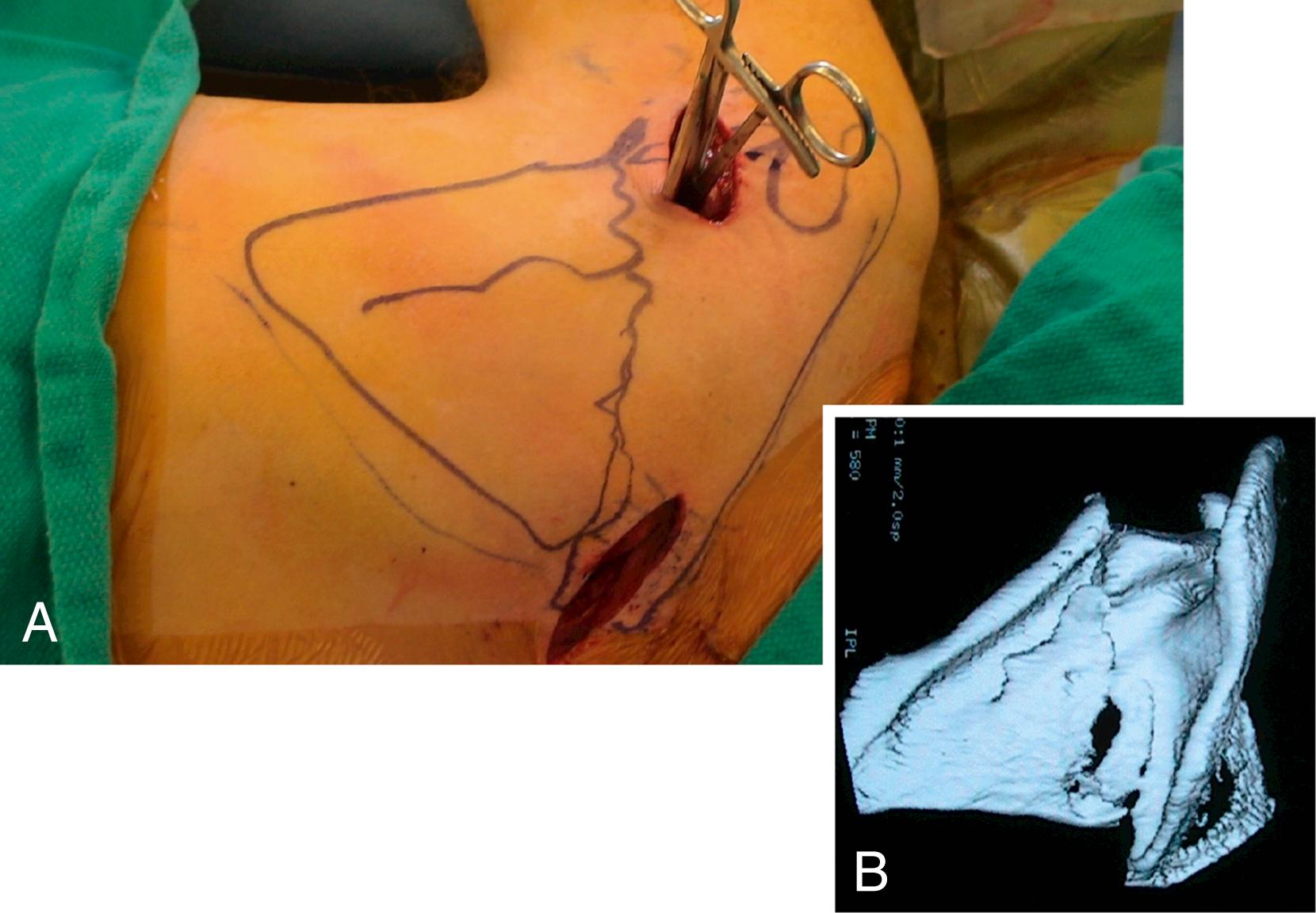
In severe associated scapular fractures, combined anterior and posterior approaches are necessary, such as when there is an associated body and/or neck fracture, with extensive comminution of the glenoid and/or a coracoid fracture. The surgical tactic in these cases should start with the posterior approach to restore the proper rotation and relationship of the body and neck and posterior glenoid surface, as well as to provide a foundation for fixation via the deltopectoral approach to restore stability to the coracoid or anterior glenoid ( Fig. 16.9 ).
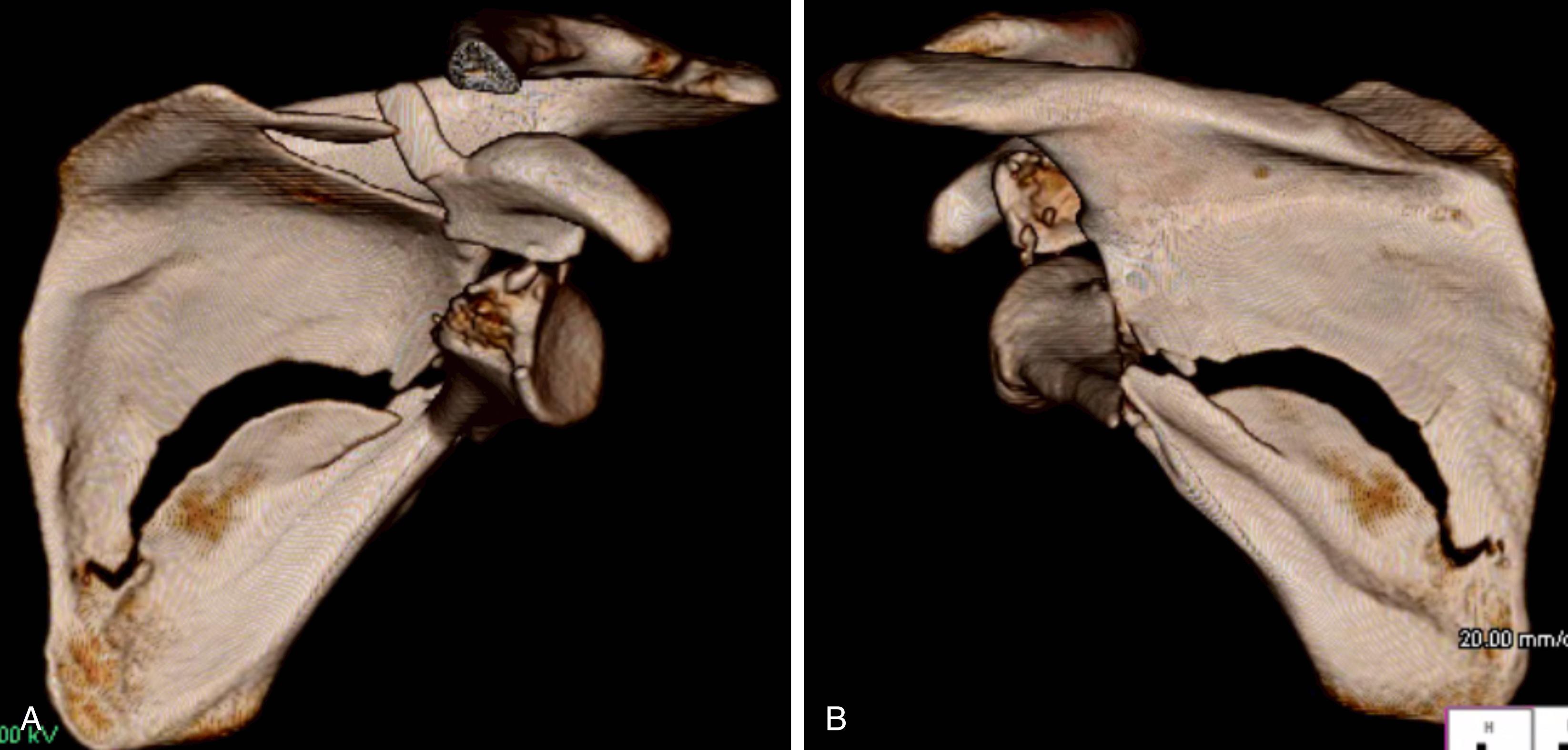
The scapula is a relatively flat and triangular bone, with a thin body surrounded by a well-developed perimeter and three unique processes, which are the key opportunities for plate and screw fixation. Deforming forces from muscle insertions determine the vector of fragment displacement ( Fig. 16.10 ). The typical cephalad, glenoid-containing fragment often medializes with respect to the scapular body, and it tends to tilt caudal due to gravity and the pull of levator scapula and coracoid-based muscles ( Fig. 16.11 ). The inferior body lateralizes often from the dominant pull of the triceps long head.
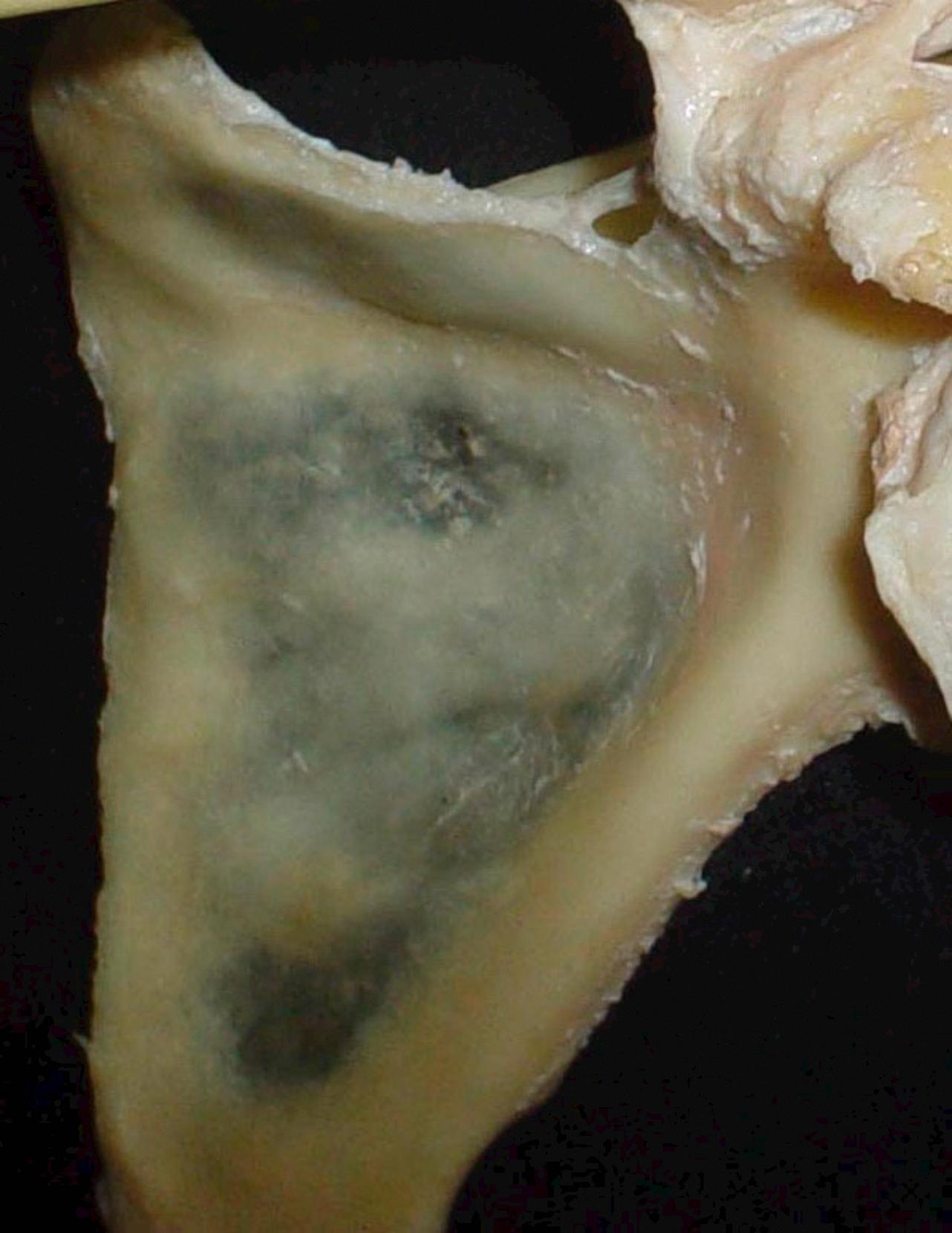
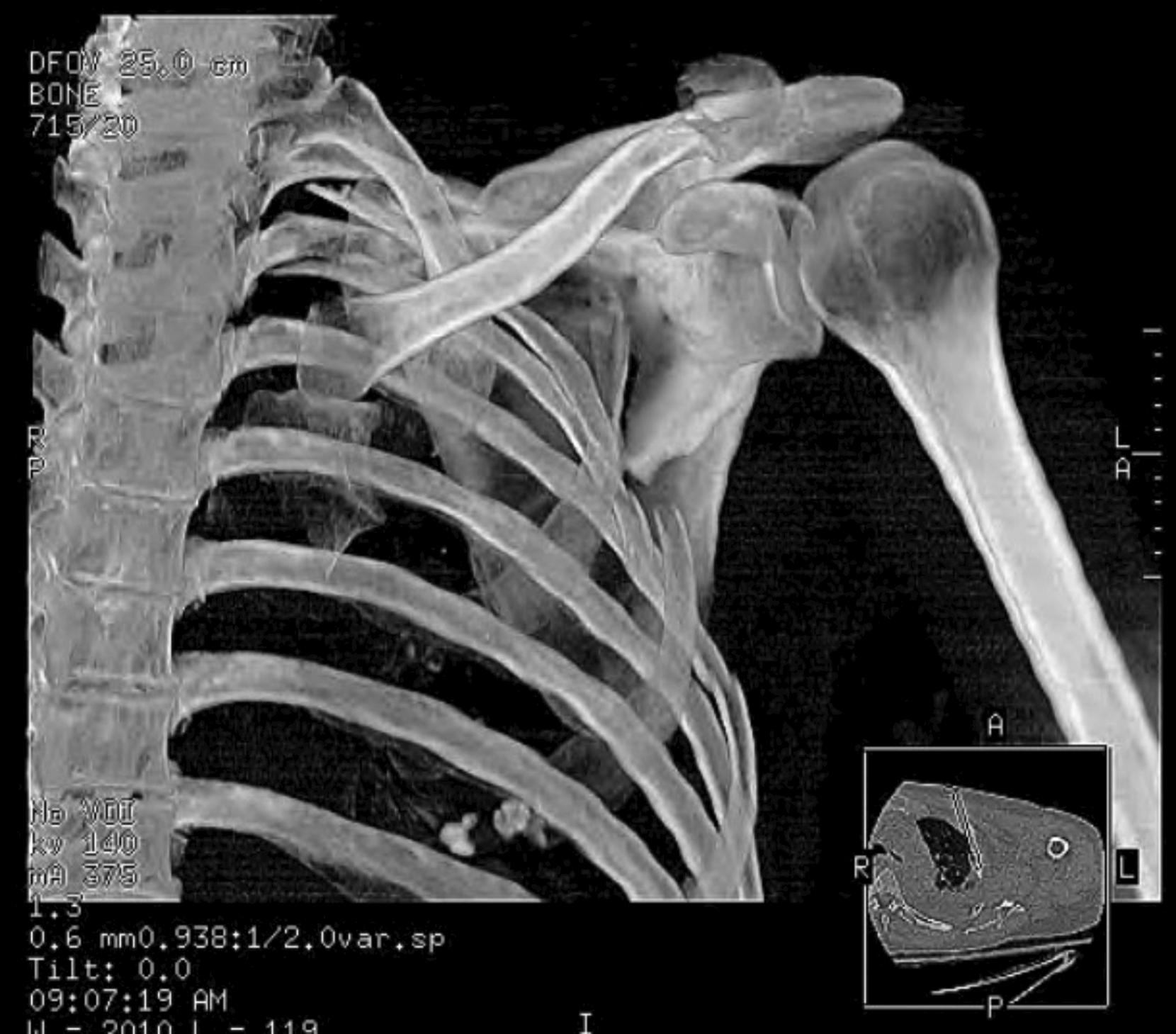
The scapular spine divides the anterior supraspinatus from the posterior infraspinatus fossa, the platform origin for their supraspinatus and infraspinatus muscles, respectively. The concave anterior body surface of the scapula serves as the origin for the subscapularis muscle providing a rich blood supply to the scapular body, along with the serratus anterior. The suprascapular, dorsal scapular, and circumflex scapular arteries provide a rich anastomosis and blood supply to this anatomy.
The acromion is the prominent, lateral most structure at the distal end of the scapular spine. The acromion and clavicle serve as the origin for the deltoid muscle and make up key links in the chain between the axial and appendicular skeleton. The trapezius originates on the acromion and scapular spine anteriorly. The anterior medial border of the scapula is the site of attachment of the serratus anterior, the main scapula protractor, and the rhomboid muscles inserting posterior medial, which function as scapula retractors.
The lateral border of the scapula forms a thick condensation of bone that ends at the base of the glenoid and forms the stable axis around which the glenohumeral joint provides rotation. The lateral border is the site of origin of the teres major and minor muscles, as well as the insertion for the long head of the triceps inferior to the glenoid where it forms a thickening due to the tension forces imparted by this muscle. The latissimus dorsi inserts in part at the inferior angle and its contractile forces are responsible for this more formidable region of the scapular body in addition to teres major.
The coracoid process is a curved, osseous proboscis medial to the anterior neck of the scapula serving as the origin for the coracoacromial and coracoclavicular ligaments as well as for the coracobrachialis, short head of the biceps, and pectoralis minor muscles. Just medial to the coracoid process on the superior margin of the scapula is the scapular notch or incisura across which spans the transverse scapular ligament, above which runs the suprascapular artery and below which lies the suprascapular nerve.
The glenoid fossa has a fibrocartilaginous peripheral labrum that is confluent with the long head of the biceps tendon at the supraglenoid tubercle. The labrum increases the depth of the pear-shaped glenoid fossa which is approximately 4 cm in a superior-inferior direction and 3 cm in an anterior-posterior direction in its lower half.
There are 18 muscular origins and insertions on the scapula in total, each with its own contribution to deforming force on fractured segments. It is helpful to understand both pathophysiology and surgical reduction maneuvers in the context of this rich myofibril endowment.
Become a Clinical Tree membership for Full access and enjoy Unlimited articles
If you are a member. Log in here